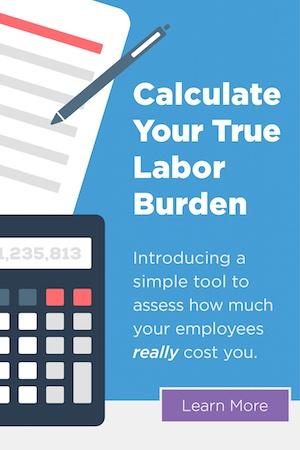If you work with staffing companies or contractors it’s critical to be aware of your terms and conditions of employment since they may potentially put you in the category of a joint employer, which can now lead to unintended liabilities.
What constitutes joint-employment?
A recent ruling by the National Labor Relations Board (NLRB) may now make it easier for multiple companies to be jointly liable for labor law violations. According to this final rule, a company is considered a potential joint employer if they have the authority to control terms and conditions of employment, whether exercised or not, and “without regard whether any such exercise of control is direct or indirect.” To avoid putting your company at risk it’s important to understand the specifics of what defines joint employment and consider alternate options. This ruling identifies an entity as a joint employer if it has an “employment relationship with the employees and they share or codetermine one or more of the employees’ essential terms and conditions of employment, which are defined exclusively as:
(1) Wages, benefits, and other compensation.
(2) Hours of work and scheduling.
(3) The assignment of duties to be performed.
(4) The supervision of the performance of duties
(5) Work rules and directions governing the manner, means, and methods of the performance of duties and the grounds for discipline.
(6) The tenure of employment, including hiring and discharge.
(7) Working conditions related to the safety and health of employees.”
To companies concerned about whether they are parties in a joint-employment relationship there may be a light at the end of the tunnel. A federal court in Florida ruled on January 29th, 2024, against an unintended joint-employer relationship where an unhappy employer intended to include a potential joint-employer as an additional party to his discrimination lawsuit.
The employee worked for a company that provided delivery services to a national retail chain that owned the distribution center where he worked. After being terminated, he filed an unlawful discrimination and retaliation lawsuit against both companies arguing they employed him jointly. The federal court rejected the argument on the basis the two entities did not exercise enough control over each other’s employees and terms and conditions of employment.
According to Fisher & Phillips LLP, here are 5 lessons learned during this case that may help employers prevent potential issues around joint employment:
- Put Clear Contracts in Place: Establish clear, written contracts with third parties, especially with service providers where you clearly outline roles, responsibilities, and expectations. Explicitly state that the third party will remain fully responsible to control its employees’ daily operations like hiring, supervision, and management, among others.
- Remain Confidential: Never share or co-determine with potential joint-employers the employee’s terms and conditions of employment like wages and benefits, hours of work and scheduling, supervision of work performed, disciplinary action, and similar matters.
- Maintain Separation in Forms and Policies: Keep your employment documents and policies separate such as your employee handbook and avoid cosigning paychecks with a potential joint-employer. To avoid joint-employment employers should maintain their ability to solely control terms and conditions of employment.
- Regularly Audit Contractual Agreements and Employment Practices: Set regular reminders to audit agreements with all third-party service providers and look out for any indications of control over the terms and conditions of employment over the third-party’s employees.
- Stay Informed of all NLRB Updates: You should constantly stay informed of the latest legal developments, which might warrant changes to the structure of existing relationships.
The safer option of co-employment
If your complex employment relationship can easily be confused as joint employment, consider co-employment as an option to better safeguard your business. According to the National Association of Professional Employer Organizations (NAPEO), co-employment, unlike joint employment, is an agreement between an employer and a Professional Employer Organization (PEO) that enables the PEO to be an “administrative” employer, while the client company maintains full control over their employees on the worksite and daily business operations. In a PEO co-employment relationship, the business owner as a PEO client maintains ownership of their company and control over their operations and employees while the PEO company provides administrative services related to employment.
Since 1991 UniqueHR has provided PEO services to companies in all industries. With over 800 years of combined experience in HR compliance we can help you navigate the often confusing, overwhelming, and ever-changing labor arena. Reach out to us now to schedule a complimentary consultation at (361)852-6392.


